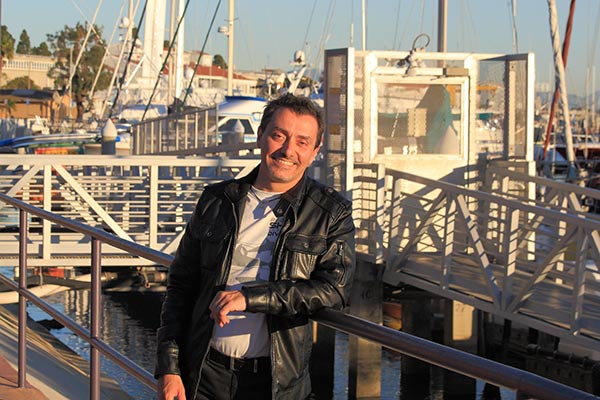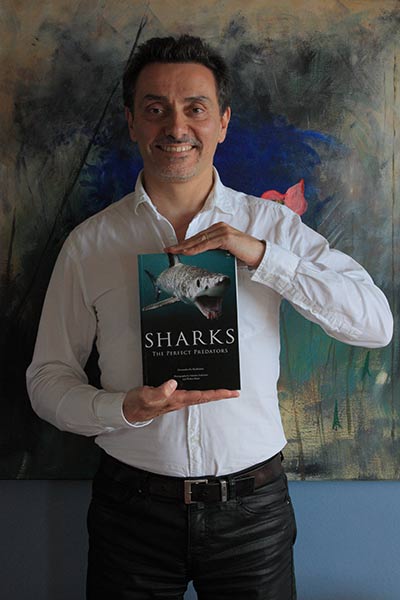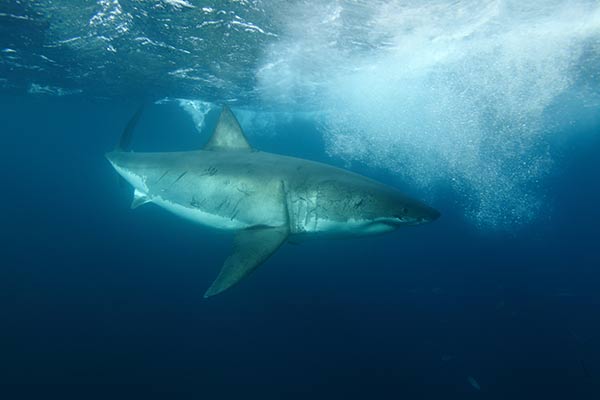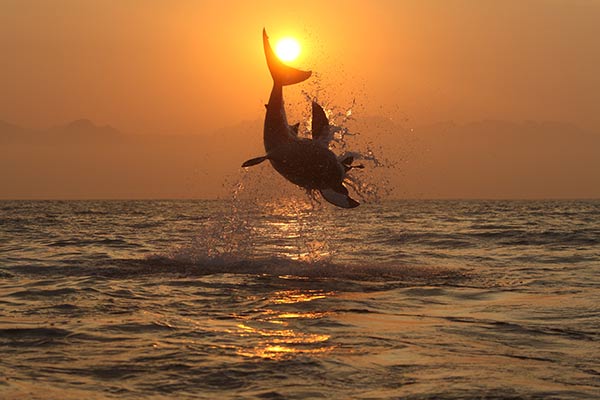 |
|---|
|
When I was a child I loved marine life and prehistoric animals. When I was 7 or 8 year old, I saw my first documentary featuring great white sharks, Uomini e squali (Men and sharks) by Italian filmaker Bruno Vailati. It included a very interesting section filmed at Dangerous Reef with the collaboration of Australian shark legends Ron and Valerie Taylor, and Rodney Fox. Today, 40 years after watching that documentary, part of my job includes hosting expeditions run by the same Rodney Fox and his son Andrew. That's quite extraordinary, a real dream come true! Their beauty... their hydrodynamic perfection. Watching a great white, a mako, or a blue shark swimming in front of me, in all their glorious beauty, is like watching the most beautiful woman. There's no artist like Mother Nature. These predators are the most perfect living sculptures. They are true artworks. The great white shark is one of the widest-ranging fishes, and it's basically cosmopolitan. However it is typically a rare animal in most parts of the world, but it's relatively common in the waters of South Africa, California, New England and South Australia. The great white shark is relatively lucky compared to other species of sharks. In fact, while most sharks have body temperatures equal to that of the surrounding seawater, the great white shark and a few other species of the Order Lamniformes, exhibit regional endothermy, which means that they can maintain a higher body temperature than that of the seawater because of a heat-retaining system. Heat is a form of energy, so great white sharks have more energy at their disposal than most sharks that are cold-blooded. Therefore great white sharks are very powerful, fast, capable of quick acceleration, able to leap high above the sea surface, and also to venture in waters with a very wide range of temperatures. Recent studies indicate that they may have a maximum lifespan of 73 years. However the large majority of great white sharks we observe are likely below 20 years of age. There's no doubt humans don't give them many chances to grow older than that. In recent years it is getting harder and harder finding older, large white sharks. The shark biology courses I teach are a fundamental part of the great white shark expeditions that I host in South Africa, which are run by Apex Shark Expeditions, and in South Australia, which are run by Rodney Fox Shark Expeditions. The course is open to anyone, and the audience usually includes researchers, universitary students, professional and amateur photographers, film-makers, and shark enthusiasts. Each course is from 7 to 10 hours of lectures, and is taught in English, French and Italian. The course program includes: evolution, classification, identification, size, coloration, morphology, swimming, buoyancy, skin, skeletal system, muscular system, digestive system, respiratory system, circulatory system, nervous system, sensory perception, urogenital system, reproduction, habitat, distribution, movements, mutualism, parasites, predators, social behaviours, predatory strategies, diet, the great white shark, threat to humans, fisheries, utilization, captivity, shark diving, conservation, research. 
We have two major problems. First, it's not about sharks only, but about all natural resources. And it's the growth of the human population, which is totally out of control. Our planet is unable to satisfy the needs of 8 billion people. The second major problem is the lack of proper laws protecting these animals. We can't hope to save great white sharks or any other species of shark until the use of non-selective fishing gears like longlines and trawls is still permitted. Never. We use cages to observe these animals, and those cages are properly built for this kind of activity. Diving with great white sharks out of the cage is forbidden in all the great white shark hotspots in South Africa, South Australia, California, and Mexico. The operators that run my expeditions are also very attentive in handling the bait in a way that prevents the shark from bumping the cage, because this can be dangerous both for the shark and for the divers. Not harming the animals we observe and taking proper care of the safety of our guests are always our priorities. That they are not much different from any other animal, not even from their dogs. Clearly they are wild animals, not pets, and they must be treated as such, with great respect for what they are. They are magnificent predators, not monsters, they have no interest for eating people, and they just want to live their life, like they did for million years. There are many ways each person can give a valid contribution in preserving shark populations. These are some of the things that we must do: using condoms to prevent having more than two children per couple, voting only for politicians who have a solid background as nature conservationists, do not purchase shark parts (meat, jaws, teeth, cartilage, etc.), do not purchase any marine species caught with non-selective gears (tuna, swordfish, etc.), do not watch documentaries advertising invasive research methods or shark fishing, do not chose dive operators who use shark body parts in the chum or as bait. For more information on Alessandro, please visit these websites: Visit Alessandro's website Interview by: Nicole Reggia |

 INTERVIEW with Alessandro De Maddalena
INTERVIEW with Alessandro De Maddalena





